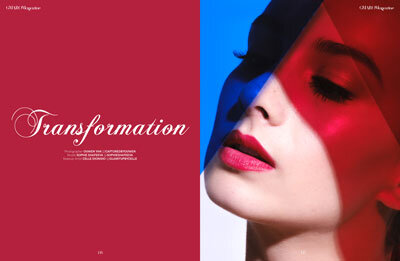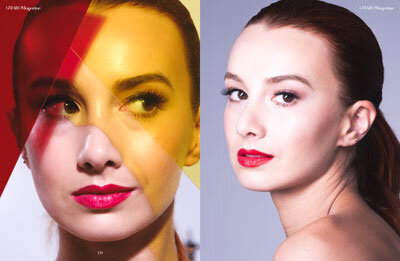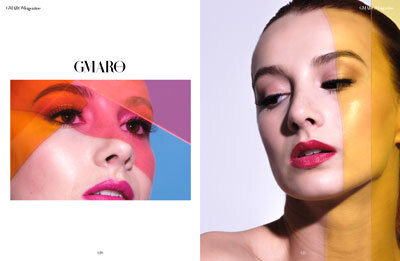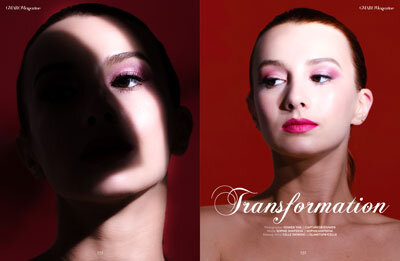Deconstructing my spotlight portraits
What is it?
Portraiture that uses a spotlighting feature. The use of spotlight has been around for many decades and is primarily used in live theatre for its long range effectiveness. Frankly it was the only lighting choices available in the old days. It has however lost its role in most photography after the arrival of softboxes. Most modern photographers in fact will go so far to say it’s an amateur choice for beauty portraiture with such harsh lighting. Fair judgement.
Before I picked up this style of lighting and started down this road, the equipment for this look was unknow to me. The look is only familiar to me from the film noir look because back in those days, hard light was the option of lighting. So it’s absolutely no surprise that I will be attracted to it and that I would provide this as part of my catalog.
Why?
Purely creative. Many professional portrait photographers start their learning with professional lighting on the genre of beauty portraiture, myself included. Lighting the face after all applies to almost all people photography. Whether you go down the road of fashion, weddings or further into beauty, it’s definitely an effective place to start. Hence beauty portraiture has become a saturated market with very developed techniques and outside of the actual subjects and editorial stories the photography itself can get dry very quickly. This is why I decided to diversifying my beauty portfolio to include personal creative flare to satisfy and challenge my creative curiosity as well as building something different to excite different clients. Yep, I got bored of the everyday beauty!
Late 2019 and early 2020 I started shooting my Shadows of Colour personal project to explore and create a unique set of skills, equipment and images to attract clients and carve out a niche style for myself. In consequence of this I stumbled upon this look. I was immediately attracted to it. It had strong story telling capabilities and emotional intensity so I quickly moved away from the previous project and started testing this one.
How-to?
There’s two ways I achieved this. I started off using my studio lighting, strobes and speed lights I already have. By using 2 cut out boards, I was able to block out light where I needed to. This worked effectively especially with almost no additional cost. I had an assistant to hold the boards or clamp it to a c-stand. You will need to use a hard light source, so bare bulb and according to the rules of lighting the further away from the subject the harder the light. The boards, however, will need to be close to the subject. The closer they are, the sharper the lines will be. Because I was aiming for beauty portraits only at the time, I only used A4 sized cut out boards. A modelling light from your strobe will help immensely in where you place that strip of light.
Taken with Godox AD200 with hard light reflector attached. 2 cut out boards were used to create the shadows. Additional strobes with gel inserts were used to colour the shadows and background.
Method number two is to use a specialized set of equipment - an Optical Gobo. I used Godox S30 with gobo and lens set. There are now plenty of YouTube and blogs on reviews and how-to guides for this light, so I won’t include details. In a sentence how it works is, Godox S30 is a continuous light with a gobo mount that allows different cut out shapes to be inserted but also allow a lens (optical component) of different focal length to be added, providing me control of sizing and sharpness of the gobo projections. There are of course bigger and more bad ass optical gobos in the market that fits directly onto studio strobes but these kits tend to get extremely expensive. If you are just giving it a go then S30 is actually a fantastic option and doubles up extremely well for product photography and a portable video light for those indoor interviews. A tip on the shoot is to have a mirror placed behind you so the model can see where the light is hitting. They can make those tiny adjustments themselves.
Taken with Godox S30 with optical gobo kit. Additional strobes with gel inserts were used to colour and light and background.
It’s worth mentioning that I’ve also used MagMod MagBeam with the gobo kit. While it’s very capable for a portable kit, it’s purpose was for background projections, it’s no replacement for an optical gobo. If you already have it or want it to project patterns on backgrounds then definitely give it a go, but don’t purchase specifically for this look. Oh by the way if you already have the MagMod inserts and gels, you can use it directly in the Godox S30 gobo kit.
My progression and learning
It’s great to put forward a new technique for business, but it’s even greater satisfaction to have learnt it.
In my Shadows of Colour project my vision was to create sharp lines of shadows in different colours and use these colours to support the emotional delivery. During the editing process I noticed the black and white option was quite impacting. In the following editorial I experimented with this look for the first time using cut out boards to create the image.
Beauty editorial published in GMARO magazine
Appropriately named ‘Transformation’, this was the moment I stumbled onto this look and changed my attention on developing this technique. At this point, not wanting to invest in a professional studio kit just for this look, I continued to stick with MagMod and home made boards. It definitely took longer to get the same results, but I am still very happy with the results. The lines were not as sharp as an optical gobo, however, artistically I found the slightly softer shadow edges more desirable and more believable.
Once I purchased the S30 set and started experimenting, it really shows the difference between an engineered product vs home made alternatives. Suddenly I can control the size and sharpness of the projection, and being able to add different gobos and gels. This really opened up the possibilities to be creative and saving a lot of effort. The only down sides to this light is, it is continuous and not really a strong light. Being continuous means I can see exactly what I’m shooting but it’s also constantly blinding my subjects. If I add a fill light from a strobe even on the lowest setting it’s a struggle not to wash out the desired effect. And I know what you might be thinking, you can darken or lighten in photoshop quite easily and I do so with my images of course. But the sweet victory for any photographer is to get it as close as possible in camera.
What’s next?
We as artists will use the same techniques and equipment but our expressions will be so different. I’ve been exploring the soulful vibe of this style and certainly want to take that further. I think this makes for such a brilliant art piece to hang on the wall, especially for someone after a modern edgy. The application can be applied to fashion, beauty and even boudoir so I will definitely explore the possibilities further. My approach is definitely for art and not targeted for brands and businesses, but I don’t see why this will not succeed as a marketing campaign for a bold lipstick. I do feel like an upgrade to my equipment is coming up. I’ve got my eyes on optical gobos that’s attached to strobes using canon lenses, and if pricing is not a huge deal for you then this is also where you should go to.
Final points.
Don’t be scared to try it. The results are stunning and it looks complicated but it really isn’t. If you have basic understanding of creating light and creating shadows with modifiers then it’s going to be such an easy pick up for you. If you are looking to get creative and have some fun only then maybe don’t invest into an optical gobos straight away and try your hands on cutting out your own gobo. Especially if you are just creating a slit of light like I am most of the time. This is a creative piece of work, and like all creative work there will be people loving it and hating it. Keep an open mind, have some fun, print them out, hang them up then decide if this is something you want to offer or not. At least in the meantime you get a chance to create!























